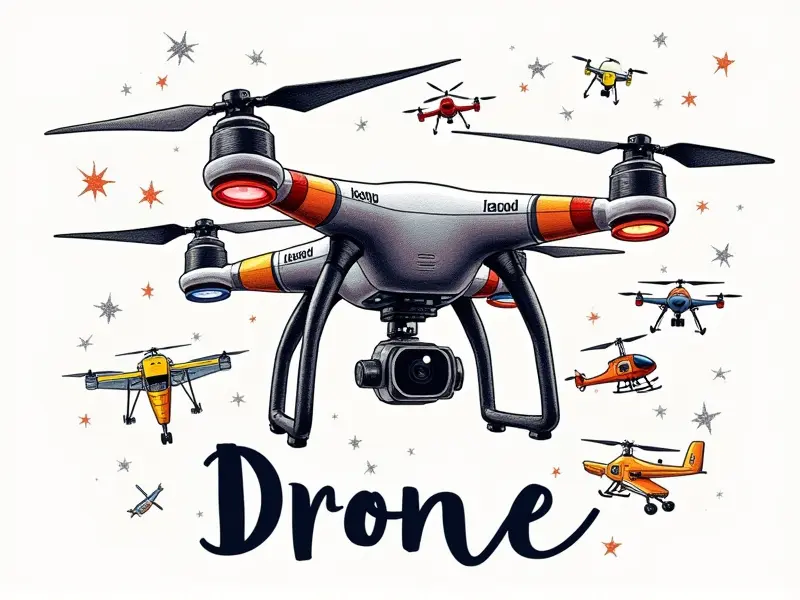Should I let my battery die?

Benefits of Draining Drone Batteries
Draining your drone's battery to zero can have several benefits, particularly in terms of maintaining the health and longevity of the battery itself. When you fully discharge a lithium-ion (Li-Ion) or lithium-polymer (LiPo) battery, it helps reset the battery management system (BMS), which can improve overall performance. However, this practice should be done with caution to avoid damaging the battery.
Avoiding Battery Memory Effect
The concept of "battery memory" is often misunderstood in relation to modern Li-Ion and LiPo batteries used in RC drones. Unlike older nickel-cadmium (NiCd) or nickel-metal-hydride (NiMH) batteries, Li-Ion and LiPo do not suffer from the same type of memory effect. Therefore, it's unnecessary to fully discharge these types of batteries regularly to prevent a decrease in capacity.
Should You Fully Charge RC Drones?
Fully charging your RC drone’s battery is generally recommended before each flight to ensure maximum performance and efficiency. However, overcharging can be detrimental to the battery's lifespan. It's important to use chargers that have built-in safety features such as automatic cutoff when the battery reaches full charge.
Best Practices for Extending Battery Life
- Avoid Overheating: High temperatures can degrade battery performance and shorten its lifespan. Store batteries in a cool, dry place.
- Use Quality Chargers: Invest in high-quality chargers that are compatible with your specific battery type to ensure safe charging practices.
- Avoid Deep Discharge: While it's okay to occasionally discharge the battery fully, frequent deep discharges can reduce its overall capacity and lifespan.
How Often Should I Cycle My Drone Battery?
Battery cycling involves fully charging and then completely discharging a battery. For Li-Ion and LiPo batteries used in RC drones, it's recommended to cycle the battery every 20-30 charge cycles or once a month if not frequently used. This helps maintain optimal performance.
Maximizing Battery Lifespan with Care
To maximize your drone’s battery lifespan, follow these guidelines:
- Store Batteries Properly: Keep batteries at a 40-60% charge level when storing them for extended periods.
- Avoid Extreme Temperatures: High temperatures can cause irreversible damage to the battery cells, while low temperatures can temporarily reduce capacity.
- Monitor Voltage Levels: Use a reliable multimeter or voltage checker to monitor your battery's health and ensure it stays within safe operating parameters.
Full Discharge Risks for RC Batteries
Fully discharging an RC drone’s battery can lead to several risks, including permanent damage to the battery cells. This can result in reduced capacity, shorter flight times, and increased risk of failure during critical moments.
Drain vs. Partial Charge RC Batteries
Partial charging is generally safer for Li-Ion and LiPo batteries compared to fully discharging them. Keeping the battery at a moderate charge level (around 40-60%) when not in use can help maintain its health and prolong its lifespan.
Maintaining Optimal Battery Condition
To keep your RC drone's battery in optimal condition:
- Regular Maintenance Checks: Periodically inspect the battery for any signs of swelling, leakage, or damage.
- Battery Balancing: Use a balancing charger to ensure each cell within the battery pack is charged evenly.
- Use Quality Batteries: Invest in reputable brands that offer high-quality batteries designed specifically for RC drones.
Battery Health: Charge vs. Discharge Cycles
The number of charge and discharge cycles a battery can handle before its capacity starts to degrade varies depending on the type of battery and how it's used. For Li-Ion and LiPo batteries, typically 200-500 full cycles are expected.
Best Practices for Charging RC Batteries
To ensure your RC drone’s battery remains in top condition:
- Use Compatible Chargers: Always use chargers that are compatible with the specific type of battery you're using.
- Avoid Overcharging: Use smart chargers that automatically stop charging when the battery reaches full capacity.
- Monitor Charging Environment: Charge batteries in a well-ventilated area away from flammable materials and heat sources.
Conclusion
Maintaining your RC drone’s battery health is crucial for ensuring optimal performance and longevity. While fully discharging the battery occasionally can have some benefits, it's important to balance this with proper storage and charging practices to avoid risks such as permanent damage or reduced capacity. By following best practices like partial charging, regular maintenance checks, and using quality chargers, you can extend your drone’s battery life significantly.

